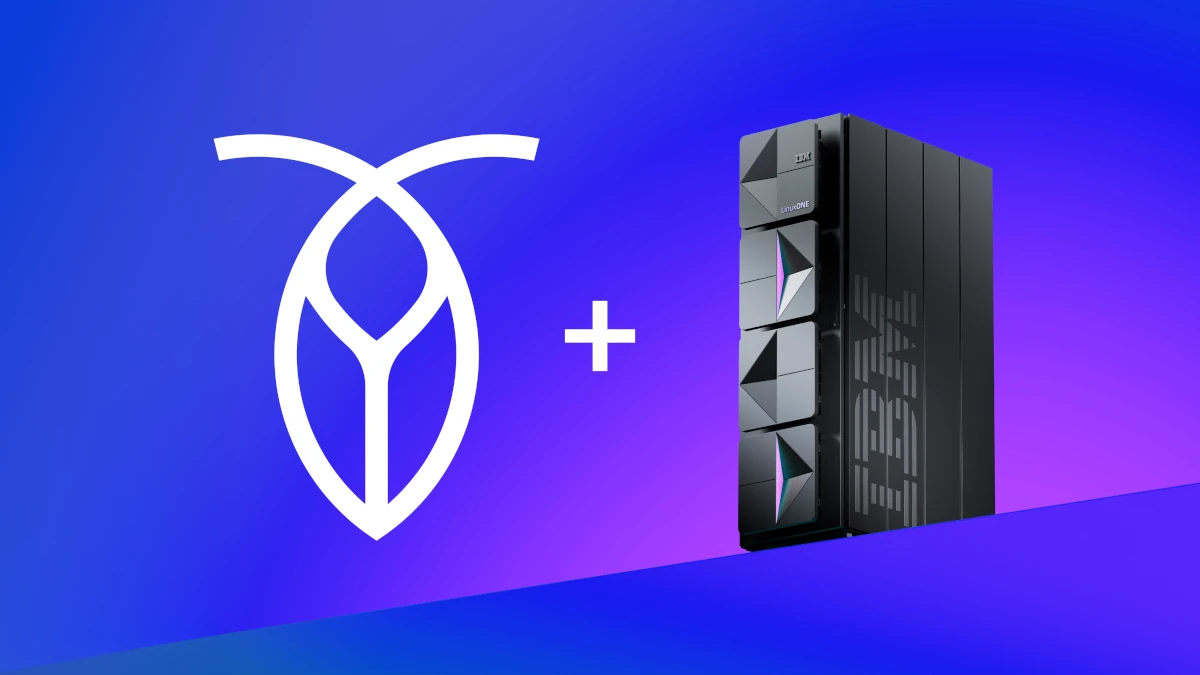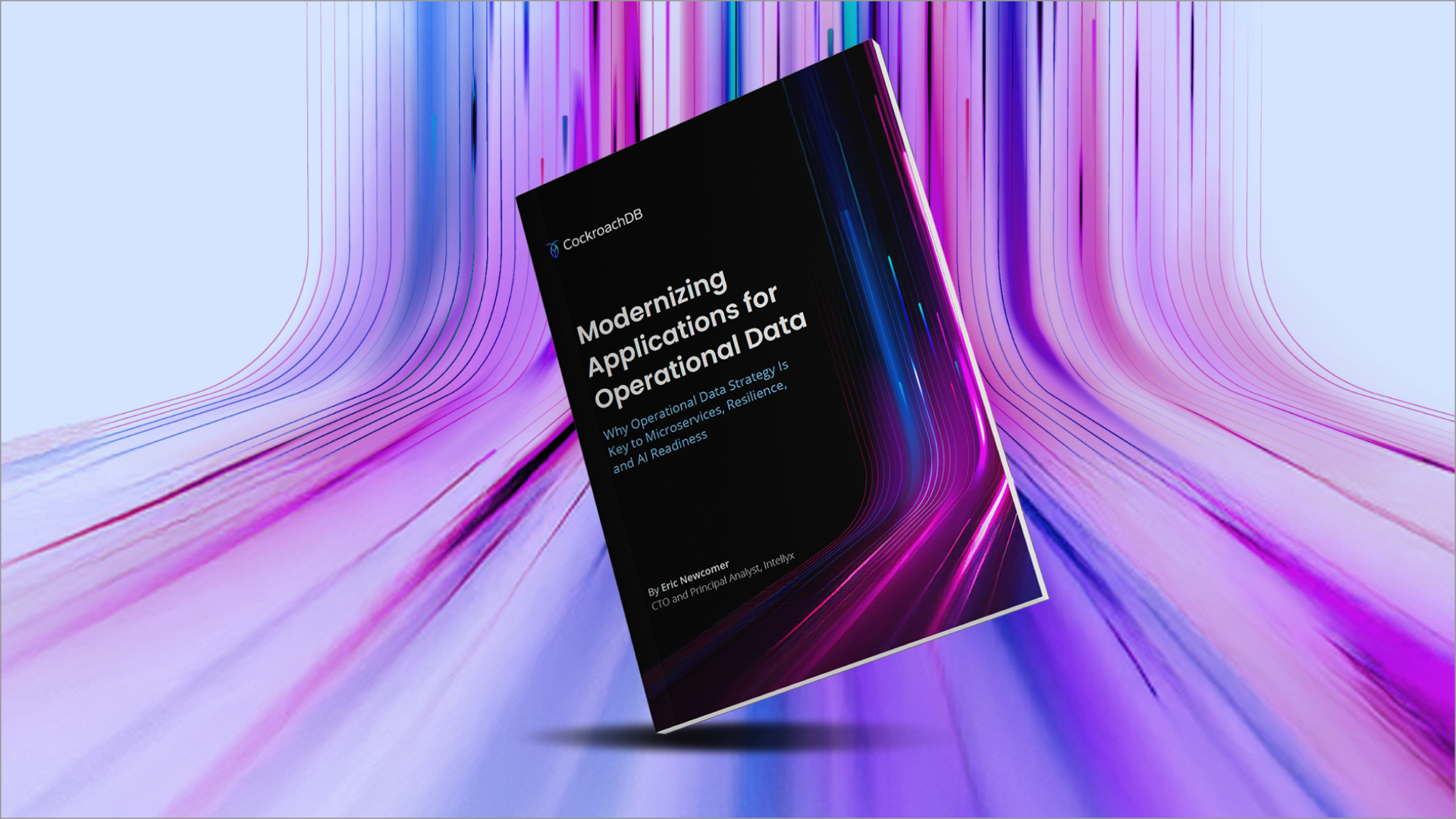Enterprises are operating across a fragmented infrastructure landscape that spans on-prem, hybrid, and multi-cloud environments. Their databases need to move just as freely.
Cross-platform portability is the key, ensuring consistent performance, security, and compliance whether the underlying hardware is x86-64, ARM64, or IBM LinuxONE. By abstracting away CPU dependencies, a database like CockroachDB gives data architects the flexibility to choose the best-fit infrastructure, without reengineering applications or risking data incompatibility. The result is true infrastructure independence: reduced risk, predictable behavior, and the freedom to scale anywhere business demands.
To deliver that architecture-agnostic consistency, CockroachDB’s datastore is built around a simple but powerful principle: bytes are the contract. Every key, value and timestamp is encoded into a canonical byte sequence before it is stored or compared. Because these encoding rules are CPU-agnostic, CockroachDB runs cleanly across all major architectures: from Intel and AMD to ARM and IBM LinuxONE (s390x).
The hidden trap: How does endianness leak?
What is “endianness”? Endianness simply describes how a CPU arranges multi-byte numbers in memory. Problems only arise when software writes raw in-memory structures directly to disk. At that point, data becomes tied to one CPU family and cannot move freely.
CockroachDB entirely avoids this hazard of endianness “leaking” directly to disk . It never writes native layouts to storage. Instead, everything passes through a precise encoding layer: What the datastore sees and stores are clearly defined byte sequences that behave identically on every platform.
RELATED
What are the principles of portability design in CockroachDB?
To make this portability practical at scale, CockroachDB follows several key design principles that guarantee data behaves the same way across every supported architecture:
1. Bytes are the contract
The key/value (KV) layer only ever handles bytes. Higher layers convert logical data, such as table IDs, row values and timestamps, into defined byte encodings. The datastore itself stays fully architecture neutral.
2. Canonical encodings for every data type
Each SQL type has a single, documented byte representation:
Integers: encoded so that byte order matches numeric order, including negative values.
Floats and decimals: transformed into order-preserving formats, so that -0.0 < 1.0 < 2.5 sorts correctly by bytes.
Strings and byte arrays: length-safe and escaped to prevent ambiguity.
Timestamps and intervals: normalized into consistent, time-zone-independent formats.
The same logical value always maps to the same bytes, whether the node runs on x86-64, ARM64 or IBM LinuxONE.
3. Ordering by bytes, not CPU words
Range scans and index lookups rely on lexicographic byte order. Keys are encoded so that byte order reflects logical order, allowing fast and portable comparisons without CPU-specific logic.
4. Composite keys without confusion
Real keys often include several elements, such as database and table IDs, index parts, row columns and MVCC timestamps. CockroachDB encodes each field with separators and length delimiters, ensuring every node can decode correctly without relying on struct padding or alignment.
5. Consistent multi-version concurrency control (MVCC) behavior
Each versioned record appends an encoded timestamp that preserves the desired ordering, such as newest first. Because this ordering is defined at the byte level, all architectures agree.
6. Integrity checks that travel well
Checksums are calculated over the encoded bytes, so corruption detection works consistently across all hardware platforms.
7. No raw structs
The datastore never writes Go structs or native fields directly to disk. Everything is encoded and decoded as byte slices, keeping storage clean and portable.
What does CockroachDB’s portability design deliver in practice?
True multi-architecture clusters.
Architecture-neutral backups: A backup created on ARM can be restored perfectly anywhere.
Predictable performance. Comparisons and scans operate on bytes, ensuring no hidden slow paths or platform-specific behavior.
A simple mental model
To envision CockroachDB’s approach to cross-platform portability, think of its datastore as a warehouse with standardized labelling: every item, or piece of data, receives the same canonical label, represented as encoded bytes. Shelves are ordered by those labels lexicographically, not by what the forklift (CPU) believes numbers should look like. Any warehouse, or CPU, can store and retrieve correctly because all labels follow the same universal format.
RELATED
Cockroach Labs Brings Distributed SQL to IBM LinuxONE and Linux on IBM Z
Portable by design
For enterprises, that consistency translates directly into operational freedom. Teams can deploy, migrate, or scale across architectures without revalidation or downtime, with confidence that data integrity, performance, and compliance remain intact. That’s why cross-platform portability is not a side effect in CockroachDB, it’s a deliberate design choice. By encoding keys, values and MVCC timestamps into canonical, order-preserving byte sequences, CockroachDB removes endianness from the equation entirely. The result is a datastore that behaves identically across x86-64, ARM64 and IBM LinuxONE, wherever it runs.
Known Limitations
In clusters that mix big-endian and little-endian architectures, DistSQL may produce incorrect results because hash computations differ between the platforms. As a workaround on heterogeneous clusters, disable DistSQL with SET CLUSTER SETTING sql.defaults.distsql = off.
Geospatial workloads are unsupported in heterogeneous clusters that include s390x; mixing s390x with other architectures can yield incorrect results, including for backup/restore of geospatial data.
Try CockroachDB Today
Spin up your first CockroachDB Cloud cluster in minutes. Start with $400 in free credits. Or get a free 30-day trial of CockroachDB Enterprise on self-hosted environments.
FAQ: Cross-platform portability in CockroachDB
What does cross-platform portability mean in a database? Cross-platform portability means the database operates consistently across different hardware architectures like x86-64, ARM64, and IBM LinuxONE without changes to data, code, or configuration. It ensures predictable behavior, performance, and compliance across environments.
How does CockroachDB achieve architecture-agnostic portability? CockroachDB encodes all data – keys, values, and timestamps – into canonical, order-preserving byte sequences. This approach removes CPU-specific dependencies such as endianness, so data behaves identically on every supported platform.
Why is portability important for enterprises? Portability allows organizations to run the same database across multiple clouds, on-prem systems, or hardware vendors. It reduces migration risk, simplifies compliance, and provides freedom to choose the most cost-effective or strategic infrastructure.
Can CockroachDB clusters mix different CPU architectures? Yes, but with limitations. While CockroachDB data formats are portable, mixed clusters can produce inconsistent results in DistSQL or geospatial workloads. In such cases, DistSQL can be disabled, and homogeneous architectures are recommended for production.
How does CockroachDB’s design benefit operational teams? Because CockroachDB’s behavior is identical across platforms, operations teams can migrate, scale, or recover data without revalidation or downtime. This reduces administrative overhead, enhances reliability, and supports high-availability strategies in hybrid or multi-cloud environments.
Jim Harris is Senior Staff Partner Solutions Architect at Cockroach Labs. With over 25 years in technology, he has worked across storage, networking, servers, virtualization and databases; helping organizations build resilient and scalable architectures.






